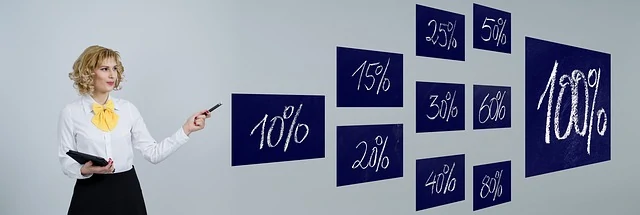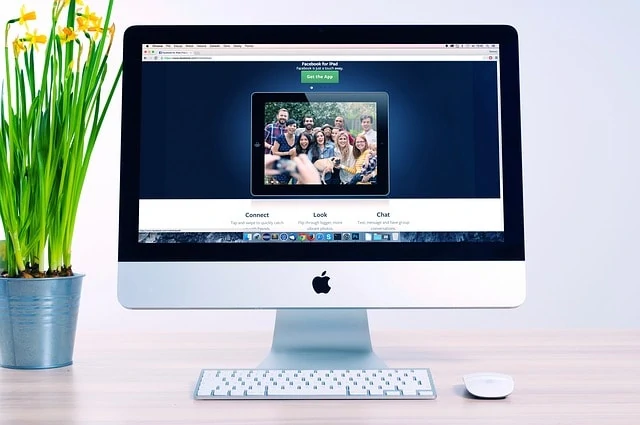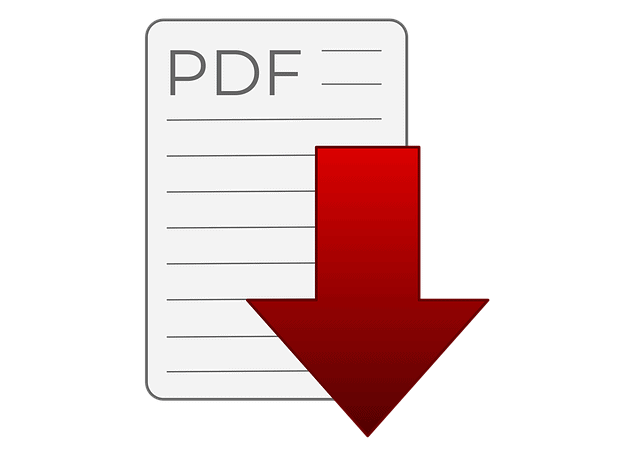The Ultimate Guide to Increasing Relevant Traffic to Your Website
Published Date: |
Updated Date:
An increase it traffic to your website is a good thing but getting relevant traffic is more beneficial to your business. Having relevant traffic to the business you have allows a more narrow and specific audience.
What good is your business if nobody knows about it? If your family, friends and a small community are the only ones who know about it then it’s high time that you put your online business into high gear and get noticed.
But, getting a website for your business is not enough. You need to increase relevant traffic to your website as well. We’re not just focusing on how to drive traffic to your website.
Rather, we’re focusing on RELEVANT traffic. What good is a relatively high influx of traffic to your website if no one intends to buy your product or avail your services at some point?
Why is relevant traffic important to your business?
Online traffic is a very simple concept. Traffic pertains to the number of visitors your site gets regularly. That’s why you’ll find online marketers saying that you need a lot of traffic to make your website work.
More traffic means more potential customers.
Website owners like you would want more people to check your website out, showcase what you’re offering or even just by sharing content with the widest possible audience. Imagine this, tens or hundreds of thousands have access to your website. That means you have a bigger audience you can cater to.
Traffic vs Relevant Traffic
It’s one thing to get a lot of people on your website but it is another to have visitors that have an interest in the solution you provide. When running ads or publishing content meant to attract prospects organically you can use modifiers to narrow down your audience. This means using terms like “remote viewing for beginners” instead of “free remote viewing course” or “rodent extermination in Plano tx” instead of “rodent extermination”. Those are real examples from our client accounts.
Pro Tip: Review the search used when visitors find your website through Google Search Console at https://www.google.com/webmasters/. Once your domain is registered, go to the Performance tab to see the search terms for which your website is being displayed in Google Search. For each search query you can see the associated pages from your website. Now go back to those pages to improve the content for terms you are already ranking for and to increase the usefulness of your content to your search visitors.
An increase in relevant traffic means an increase in conversions.
A user checks your website out and decides to make a purchase or hit that Call-to-Action button. Because of the user’s purchase, he’s now converted from a user into a customer. Now, imagine if more than a hundred check your site in one day. Some of these provided that you got good content, results to increase in conversions.
Relevant traffic points towards the right kind of people who needs your business
In a plethora of websites, your most pressing concern is how to drive traffic to your website. It can really be a daunting and challenging task. That’s actually the first stage of the marketing funnel stages, Awareness. But you wouldn’t want to stop there; otherwise, you’re business plateaus. You would want people to engage, spend more money on your business and add more purchases from your business. For a deep dive into Marketing Funnel Stages and stage-specific assets you can create for your business, consult our video article and infographic.
So how do you drive relevant traffic to your website?
Begin with an end in mind.
Quite a paradox, right?
Some people have the misconception of initially creating a Facebook ad campaign or an organic search campaign on Google. To tell you honestly, that’s not really a good move to begin with. You have to set an end goal or objective.
The rest of the strategies won’t work if you don’t have an objective in mind. You need to determine what kind of end result you want for your business. You need to consider which products and services to sell throughout a campaign. From there, you can trace your steps backward & figure out steps that the customer needs to make to purchase your products.
Say, for example, you’re a coach for public speaking. What’s going to be your end goal? You would want people to get one-on-one coaching with you. With that goal, you can trace your steps & figure out a killer value proposition through each marketing stage.
Don’t just stop at offering a personalized 30-minute live coaching online plus a free eBook as that’s been overdone. You need something that could set you apart from other competitors.

Here’s what you can do instead. You could provide a monthly coaching call, on-demand access to you during business hours through Voxer (a walkie talkie app), a workshop recording on how to land more public speaking gigs, a speaker 1-page template and a set of sheet cheats to save time building their talks. For each of these, your offer needs to emphasize the transformation and results rather than the mechanics — that’s a topic for another day.
Pro Tip: When you’ve got that amazing offer, break it down in components to use as assets for your marketing campaign. You could share a couple videos of your course or a worksheet in exchange for contact information. Then, you can host a webinar that helps people accomplish the first step of your process. By doing this, not only do you save tons of work for yourself but you ensure that your offer will be relevant to the leads you are generating.
Find the best assets for your campaign.
Your digital assets can include infographics, articles, audio interviews, podcasts, mini-courses, etc. You need to determine which of these assets work best for you and your team. To do so, I recommend you focus on the medium that comes naturally to you as the foundation of your digital marketing strategy.
Let’s take for example the personal coach for public speaking. You can create a digital traffic campaign by creating a short video lesson. You could also put your services into writing. Engage potential customers with the article that you have. You could also leverage visuals when promoting your business as visuals get more engagement.
The goal here is to find the quickest and most effective way to get people to avail your services. Map all the assets you and your team are comfortable to use. This will help in coming up with a more effective digital traffic campaign that gets better results in less time.
Build your Promotional Page

It’s no surprise that you’ll need a little persuasion to get users to click that Checkout button on your website.
You need to create a kick-ass promotional page where you can showcase all those digital assets. The promotional page can be gated wherein a user is required to give his contact information just so he can access your content. Or, you can choose the publisher model by using ungated content.
Whatever method you choose to work with, always remember to find a way to get their contact information. That’s why you’ll likely use a mix of gated and ungated content. You could provide inline forms, exit intent pop-up forms. You could put forms on the sidebar or at the bottom of the articles.
You also need to make sure that all technical aspects are functioning well. The page should also load fast, no errors on the page or coding errors and the page could be accessed through mobile phones and tablets.
Pro Tip: Use a free tool like https://gtmetrix.com/ to measure the loading speed of your promotional pages. When you sign up for a free account, you can get advanced metrics such as “Contentful Paint” which is the time it takes for something to be displayed on your page. A 1 second improvement in loading speed can easily account for a 7 to 15% increase in conversions. If your page is too slow, the likely culprits are bargain hosting providers, large images, video files and coding errors.
Setup a Facebook Campaign
Facebook advertising uses what I call the hunter model while organic search engine traffic is the gardener approach. Hunting benefits your business by bringing relevant traffic and leads on demand while gardening creates a foundation that keeps paying dividends day after day after day…

For your Facebook campaigns to be successful, you need to have the right objective. Your ungated content pages can have an objective that leads to an increase in Landing Page Views.
Your gated content, such as a squeeze page to register for a checklist download, could also begin with an objective that optimizes Landing Page Views. After that, you can just add in a conversion campaign objective with Lead Conversion Events. You could either do that after the traffic campaign or do it simultaneously.
When using this mixed campaign objective strategy you should review your budget regularly to pivot from your Landing Page Views to your Lead Conversion Events objective. I recommend your budget be sufficient enough to trigger a minimum of 100 events per week (landing page views, lead conversion events, etc.) to get optimal results.
In doing Facebook campaigns, you must make sure that the Facebook Pixel is properly installed for page view on all pages. You’re probably wondering what the purpose of a Facebook Pixel is. Facebook Pixel is a code placed on your website. It gathers data that help you keep track of conversions derived from Facebook ads. It also helps you optimize ads, build a target audience for future ad campaigns and recapture people who already purchased from your website.
Don’t go all out on your budget on the first day of your campaign. There’s an optimization period wherein Facebook shows where your campaigns have stopped learning. From there, you can add more to your budget in increments. Don’t be too quick to increase the budget as it might mess up the entire campaign.. If you have less than a hundred conversions in a week then expect sub-optimal results in the conversion campaign.
Where do you start to optimize your ads?
Work from a “good enough” ad copy rather than doing multiple ad copy tests to get the perfect words. It will yield better results if you start testing multiple creatives such as different images and videos. Let your creative juices set in and experiment with the images. Be as visual as you can get so people would get attracted to your copy.
Pro Tip: Increase the brightness, contrast or saturation of your images to make them pop. Just like the goal of an email subject line is to stand out in the inbox, your ad creative’s job is to draw a person in as they are scrolling through their news feed. Don’t be afraid to try some crazy images too!
Slice and Dice Your Content in Multiple Formats
Repurpose your content in various formats. You can create an article from a video you made. You could also make mini-series of the video you just created. Not only that, you can attract potential customers by creating an infographic based on your video. You could also come up with a webinar that persuades people in getting your product or services.
Remember, people learn in many ways and they need to hear something multiple times before it sinks in!

Experiment on the content you have and see which medium gives the best results. For example, you can provide a downloadable PDF through the landing page or perhaps a live online event training that requires registration. Make use of ways to get lead contact information from your content pages. You could use a messenger bot campaign as an alternative to continue communicating with your prospect.
Plan your communication and follow-up strategy
You got the leads and their contact information. Now, what’s next?
You need to keep your communication lines open with the users. You can have an automated email follow-up campaign to give them more value.
You could also make use of a Thank You page which promotes the next step of your marketing campaign. You can suggest that they call you or schedule a consultation, create calendar notices that reminds them to attend the event they registered for, or even promote an enticing paid product or service.
There are resources accompanied in this article and I encourage you to use them. Or better yet, schedule a consultation with me and I’ll help you map out the right campaigns to get relevant traffic for your business. Last but not least, I’m inviting you to a one of a kind Masterclass that we’re hosting. This is a more in-depth take on how to drive relevant traffic to your website and resulting in more sales.
Here’s the full transcript of the video presentation that you could also read:
How can you get more relevant traffic to your website and business to ultimately get more clients and customers?
I’m Pol Cosineau, President of The Digital Navigator and in this installment; I’ll be sharing you an approach on how you can get more relevant traffic. So before we go too deep, it’s important to cover why it is important for you to get more relevant traffic. And you can see that I am already emphasizing on the word “relevant”. Because it doesn’t really doesn’t matter who are visitors to your business or website if they’re not people purchasing or that have intention to buy from you at any point down the road. This is why you want to make sure it’s people that are relevant. It’s important because the flow and leads that you get will ultimately determine the sales that you get. If you’re only marketing to 10 people, you’re marketing will be completely saturated and it will be difficult to get more sales. But if you have access to a thousand people, hundred thousand people, ten thousand people, then your reach will be that much bigger. And there’s gonna be much more opportunity for your business to grow. The traffic is the first piece of the marketing funnel stages. So we have awareness, which is bringing in cold leads and prospect to your business.
And if there’s a bottleneck at that stage, your business will never grow. The second step is the engagement where you continue to provide on-going value to these people, you establish your authority, credibility and expertise. While you need to have eyeballs for people to actually engage. If there’s no one gaining awareness, then there’s no engagement at all. Then the third stage is convert stage where they’re spending time and money. And the last stage is the ascend stage, where people are increasing their overall purchases with your business. Now that we know that the first stage is awareness and that’s where things starts. Then you know why that’s important how this is the way for you to grow your targets this year. So what is the process for getting more relevant traffic ,that we’ll be discussing. We’re gonna use an approach that uses a content and it is driven for Facebook, Google, organic searches, social media. Those are the medium that we will primary be working for these series.
So we’re gonna have more additions of articles, videos and other resources for you that will be going along with this video currently.
Let’s start off with an overview of this process. Well, it all starts in creating a traffic campaign and you may be tempted to start with the first step such as Facebook ad campaign or an inorganic search campaign on Google. But really, that’s not a good starting point. You have to start with the end in mind. And that means considering what products or services will you be selling through that campaign. Once you know what that is, you’ll be able to reverse-engineer the steps that a new prospect will need to go through so they can actually purchase your product or services. And that it includes some education, sales materials, and I’ll be guiding you through that along the series.
Once you know what the end in mind is, the product or services you are selling, you have to determine what the best asset for your campaign is. What is an asset? That could be a video, an article, an infographic, it could be a series of audio interviews, mini-courses. Of all those are digital assets. So we’re focusing on primarily on digital traffic campaigns here. You need to assess what you and your team is comfortable with the medium. Are you on video or not? Who’s going to be the face of business here? Do you like writing or do you have a writer on your team that you could leverage for producing those? Are you someone that can easily make concepts visually? Would you use an infographic or other diagrams perhaps?
Once you know which of these medium, you’re comfortable with; you’ll be mapping all the assets you’ll create for your campaign. This includes ad copy if you’re going to use advertising and emails for a followup campaign. Then you want to be building out your promotional page. This is where your visitors will be able to access those assets. That could be a blog post that people can read without submitting their information. Or it might be a landing page where people have to provide their contact information to access a special report or a course that you’re doing. You can consult our article on the landing page paradox to learn more about landing pages and how that fits in your overall business model.
What is important to know is that you do need that promotional page. Now, there are some techniques that use, let’s say Facebook messenger or different chatbox. And in those ones, you can really argue that there’s not gonna be much any promotional page but you still need to map out a conversation and that will replace the promotional page. It’s still a way on how people will be able to access your content.
Then the next step is for you to plan out your communication and follow-up strategy. So that you can actually sell your intended products and services. That means, once you collect their contact information, is a sales rep going to be calling them? Are you going to have an automated email followup campaign that gives them value? And that could be sharing your best blog posts videos. Are you going to be walking them through that mini-video series through some messenger reminders? Are you going to use phone/ text sms messages to follow up with them? How are you going to have that on-going communication so that they can understand how your product and services can help them achieve their intended end goal or overcome that challenge they’re facing. If you don’t have a follow-up strategy then you will likely fail and your campaign will fail and you’re leaving a lot of money on the table. So don’t just start getting paid ads without knowing what’s going to happen after.
Then we’ll be looking into how to setup a Facebook Ad campaign especially if you’re selling digital products, online courses, coaching, training, membership subscriptions. Facebook ads are a great way to bring in qualified leads and visitors to your business. So we’re gonna have a portion of the series dedicated fully to that, walking you through different campaigns and this will generate a lot of traffic.
Then we’re going to through one of the steps for getting organic traffic on Google and other search engines. I just love organic search traffic because these are people looking for terms like how do I create an online course. Let’s say someone is writing that on Google, well, if you have that course that you sell that’s basically on how to create an online course. They find your website when they’re entering that, they already have an intention. You know that this is going to be relevant for them and that they are a prospect. And now you have to go through budget and work that in their business to make sure that they’re truly qualified but there’s a pre-qualification that happens on Facebook. You tend to be more of a hunter where you’re presenting your ads and disrupting their experience. While on Google, they are the one looking for you. Which is why I love Google organic traffic. Not always, but in many times, I’ve noticed that the Google organic traffic will stay on on-site pages longer and you convert a little better. Meaning you submit your lead information and ultimately buying from you. And they’re gonna be more engaged and actively looking for that content that you have to offer.
And I will have an installment that will go through some of the key steps where you’ll be successful with them. And then we’ll have a section on how to slice and dice your content so that you can repurpose it into multiple formats. If you have a video, you can create an article with that. You can have an infograph that can be distributed. May be you can have a special report that people can sign up for. You may want to make a webinar version of that so that you can convince people in getting your products/services and have some sales through them. So we’re gonna be teaching you some key concepts on how to repurpose them.
But I want you to keep in mind for now is nothing now of that overall strategy is really the first step for getting relevant traffic to your website and your business. Just going through those key steps, meaning what is the end in mind. What are the products or services you’ll be selling. Then you want to go to determining the best assets you can leverage your campaign. The promotional page or how people will be able to access that content. Then what will be your followup strategy and how are you going to communicate with people once they’ve submitted their contact information to you and your business. How can you setup a successful Facebook advertising campaign. How can you get even more traffic organically through Google and other search engines. And finally, how can you create multiple assets with all the hard work that you’ve done in repurposing it.
For now, I invite you to consult the resources accompanied to this video. I’m also inviting you to schedule a consultation if you want some help in mapping out that campaign for getting that relevant traffic for your business. You can do that through this button on that page along in this video. And I’m also inviting you to a special master class that we’re going to be hosting on how to increase the relevant traffic for your business and ultimately generate more sales.





0 Comments